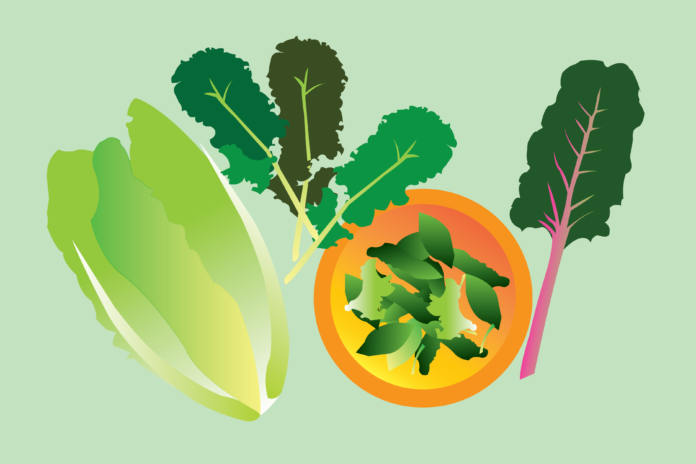How making unconventional pesto fixed my food waste problems — and how it can help fix yours, too
By NADIA ANEES — nsanees@ucdavis.edu
I first learned that pesto was something I could make by myself, in my own kitchen, when I was a freshman in high school, and it flipped my world around. I’d been a big pesto fan but viewed it as a little delicacy I would only enjoy when going out to delis or restaurants.
Almost everyone I know can relate to the inevitable problem of their produce going to waste before they finish it up, which keeps them from buying large quantities of fresh produce like vegetables and leafy greens. I’m here to convince you to look into making non-traditional pesto as a solution to your food waste habits.
Pesto has its origins in Genoa, Italy — specifically in the Liguria region. Authentic pesto is made by hand using a mortar and pestle and a minimal list of high-quality ingredients: basil, toasted pine nuts, olive oil, salt and either parmigiano reggiano or grana padano cheese. It is traditionally paired with specific shapes of pasta and is enjoyed just like that.
However, if we’re not making authentic pesto like an Italian grandmother might, pesto can be a very versatile and forgiving condiment to make and utilize at home — especially when that time comes around when you have too many greens on hand and not enough time. It can be made in a pinch with just a food processor or a blender.
I like to imagine the components of pesto as a three-part pie chart consisting of the green, golden and brown groups. Different herbs or leafy greens, and even cruciferous vegetables like broccoli, can be perfectly used for the “green” part of this sauce. This is where you can get crafty when your spinach, kale, broccoli or even avocado is about to go bad. Typical nuts you may have around, such as cashews, walnuts or almonds, can be substituted for the pine nuts, making up what I call the “brown” group. Lastly, garlic, parmesan cheese and olive oil make up the “golden” group — I would highly suggest using the same golden group ingredients whether you’re making a pesto with about-to-wilt greens or the traditional way. Regardless of what you use in the green group, the golden group of ingredients is where you get amazing flavor.
Simply throw your ingredients from each of the color groups listed above into a food processor and blend until smooth. With that, you have pesto! You can use it in sandwiches, pasta, rice or salad bowls, or you can eat it as a dip with vegetables or chips. Not only does it add some color and flavor to your meals, but it also saves you from throwing away vegetables that you wouldn’t get to eat otherwise.
I hope you don’t let the danger of wilting greens keep you from buying the produce items that keep you nourished and well. If buying produce doesn’t fit within your budget, you can pick up leafy greens at the Pantry Monday through Friday from 10:15 a.m. to 5 p.m. or on weekends from 10:15 a.m. to 1 p.m. Making pesto is one of my favorite ways to alleviate my food waste issues, but there are also a myriad of other ways that the internet can help you solve your own food waste problems.
Written by: Nadia Anees — nsanees@ucdavis.edu
Disclaimer: The views and opinions expressed by individual columnists belong to the columnists alone and do not necessarily indicate the views and opinions held by The California Aggie.




